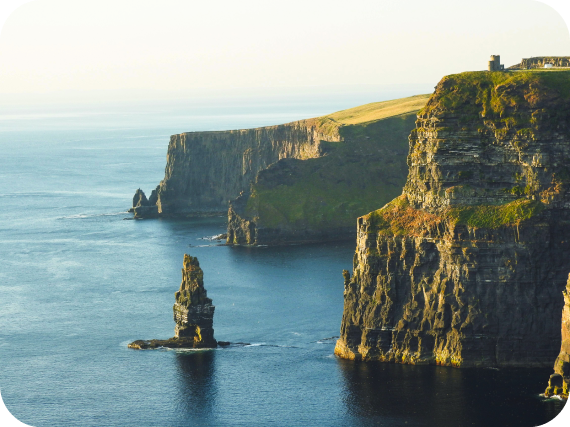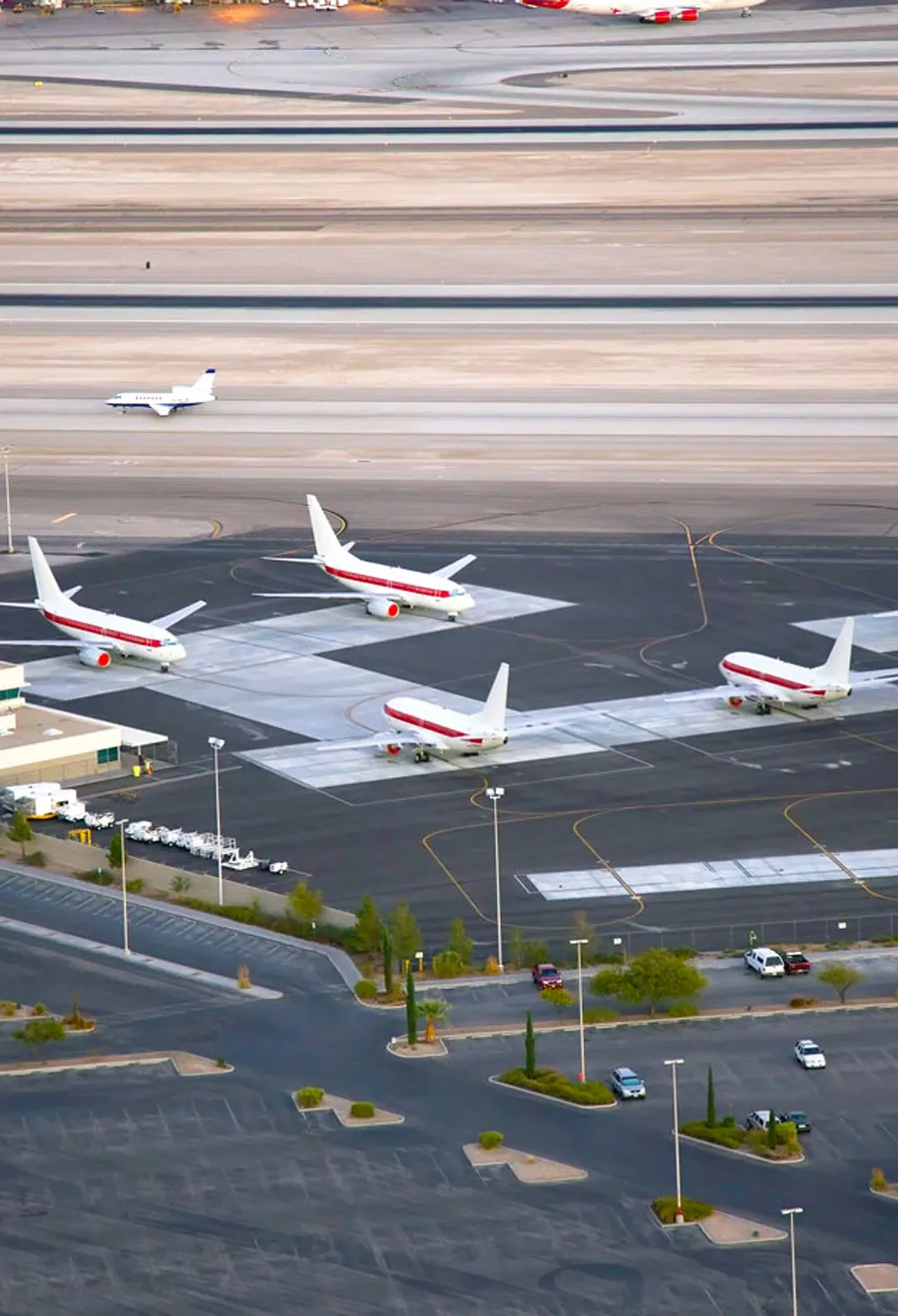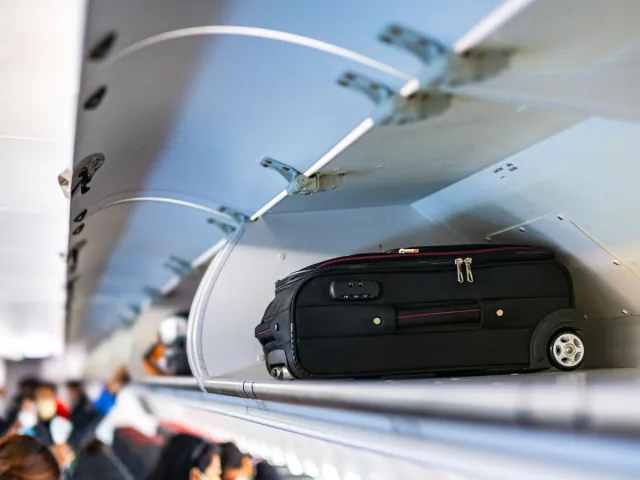You’ve surely never flown on Janet Airlines, but there’s a decent chance you’ve seen one of its planes somewhere in the Southwest without knowing it. There’s a good reason for the uncertainty: The airline flies a semisecret fleet of aircraft owned and operated by the Department of the Air Force, which uses it to ferry military personnel, contractors, and civilians working for the Department of Defense to Special Access Program Facilities (SAPF). Here’s what we know about Janet Airlines, the unofficial name for the U.S. government’s highly classified airline.
Janet Airlines History and Fleet
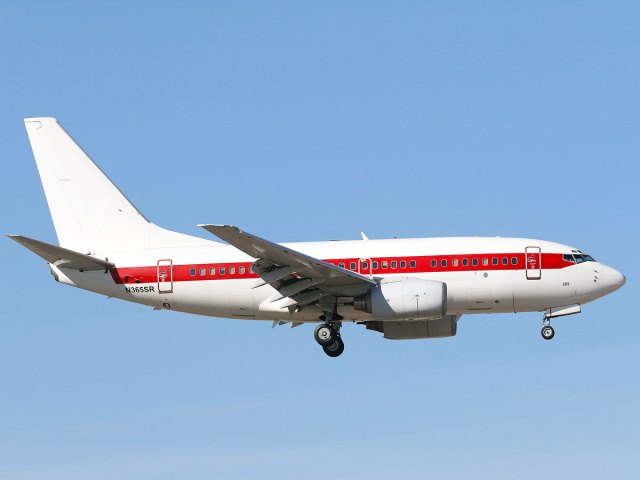
Given the highly classified nature of the operation, no one knows for sure why Janet Airlines is called Janet Airlines. But there are several theories as to the meaning of the unofficial moniker, which is used as the airline’s call sign with air traffic controllers. According to a report from Business Insider, some think it’s an acronym for “Just Another Nonexistent Terminal,” while others have suggested it stands for “Joint Air Network for Employee Transportation.”
Though there’s no reason to assume anything nefarious about Janet, they certainly threw conspiracy theorists a bone by having their first flight travel from Las Vegas to Homey Airport, the official name for the airfield at Area 51, in 1972.
Today, just 11 aircraft make up the Janet fleet. Unlike other aspects of the airline, the planes the airline operates are well known. Currently, there are six Boeing 737-600s and five twin-engine Beechcraft turboprops. All six 737s formerly flew for Air China from 2003 to 2009 under lease from General Electric Capital Aviation Services (GECAS). The aircraft were transferred to the Air Force beginning in 2008.
The 737s are recognizable for their short fuselages and tall vertical stabilizers, which give them a distinctive look, though they are otherwise unmarked aside from a horizontal red stripe on their sides. That first flight from Las Vegas to Area 51 was made with a Douglas DC-6, which, along with a second DC-6, was in operation until 1981.
Where Does Janet Airlines Fly?
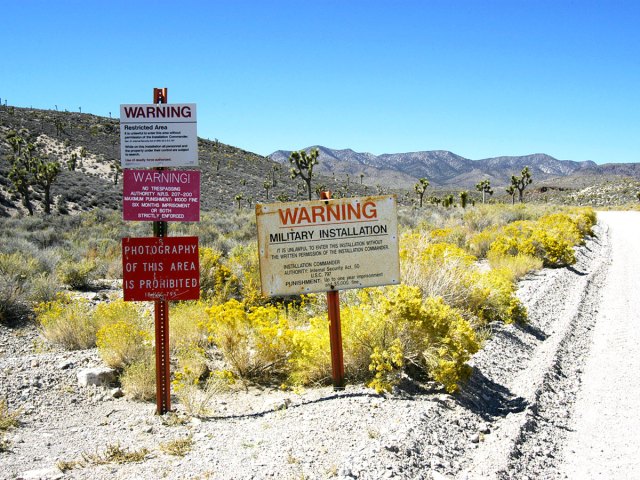
One of the main routes Janet flies today is the same one it started with in 1972: from Harry Reid International Airport (formerly McCarran International Airport) to Area 51. If you’ve flown in or out of Las Vegas, you might have noticed a private terminal on the west side used for helicopters and private jets. It’s the same one Janet Airlines uses. Though the highly secretive base at Area 51 — officially known as Homey Lake or Groom Lake — is only 83 miles away, the easiest way to reach it from certain directions is by air.
Janet also flies to other military sites that, like Area 51, are part of the Nevada Test and Training Range (NTTR), which the Nellis Air Force Base website describes as “a flexible, realistic and multidimensional battle-space to conduct testing tactics development, and advanced training in support of U.S. national interests.” If that sounds vague, well, that’s very much in keeping with most of what is publicly known about Janet. According to the independent Area 51 enthusiast website Dreamland Resort, other destinations include Naval Air Weapons Station China Lake, Edwards Air Force Base, and Palmdale Plant 42, all of which are in California. Most of what happens at these installations is on a need-to-know basis.
These destinations have code names, too. Plant 42 is known as Station 1, Area 51 is Station 3, Basecamp is Station 6, Tonopah Test Range is Station 7, and Janet Terminal at Harry Reid is Station 9.
Now Hiring?
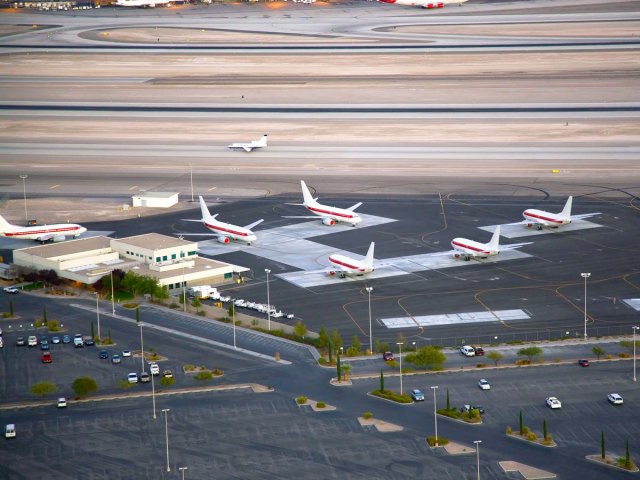
If you’d like to know more about Janet, you might have to get a job there. The airline does occasionally hire flight attendants, though the requirements are a bit steeper than they would be at, say, United or Southwest. Anyone hoping to fly the friendly skies with Janet Airlines will need to be comfortable handling unusual security situations such as hijackings and also will need to obtain top-secret government clearance. Considerations include applicants’ allegiance to the United States, alcohol and drug use, financial status, foreign influence, and mental health.
Flight attendants also must keep any information about their duties and the destinations they’re flying to shrouded in secrecy, so it’s unlikely that the rest of us will know much more about Janet anytime soon. In fact, it wasn’t until 2013 that the CIA officially confirmed the existence of the airline’s secret base at Area 51 through a Freedom of Information Act (FOIA) request filed in 2005.
More from our network
Daily Passport is part of Inbox Studio, which publishes content that uplifts, informs, and inspires.


